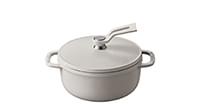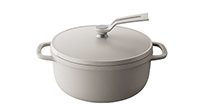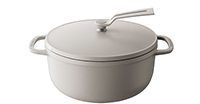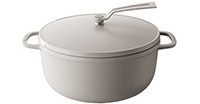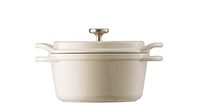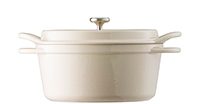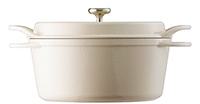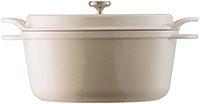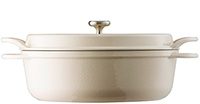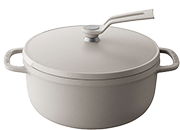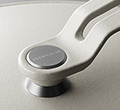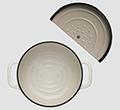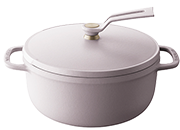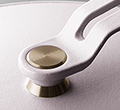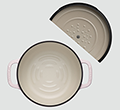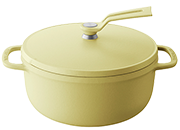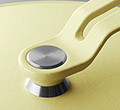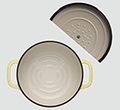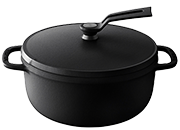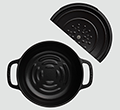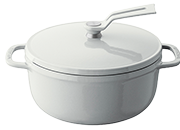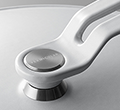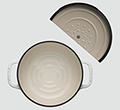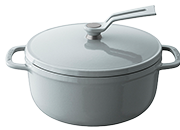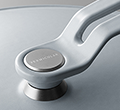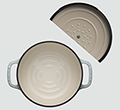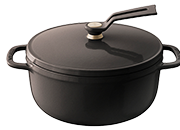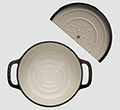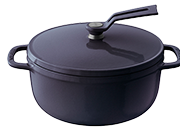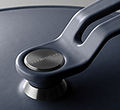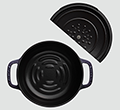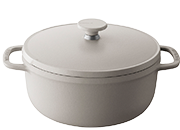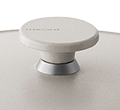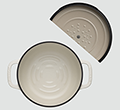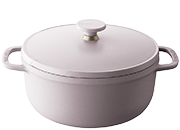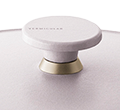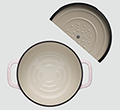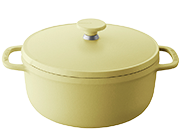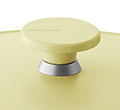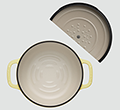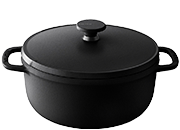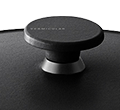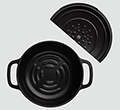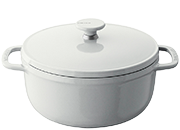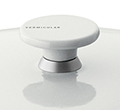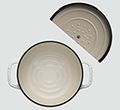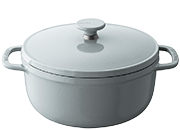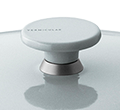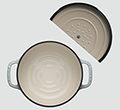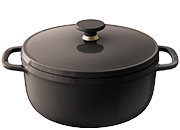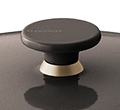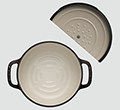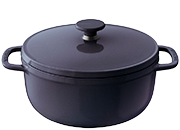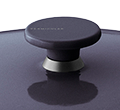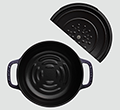Washing rice
Rinsing rice can seem like a trivial step in the rice cooking process; however, taking care to follow the proper washing method is crucial in achieving perfectly textured and noticeably more delicious rice.
And believe it or not, white and brown rice require different washing methods. Learn how best to rinse each type of rice below.
Washing white rice:
White rice has been milled to remove its outer protective husk; thus the grains are delicate and must be washed gently to minimize damage.
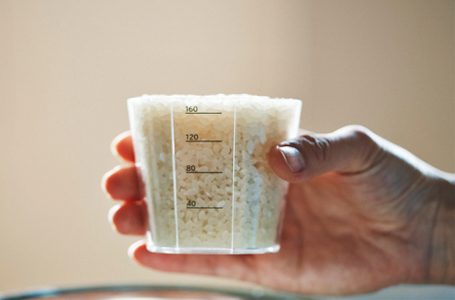
1. Accurately measure the desired amount of rice using the provided rice measuring cup. Be sure to precisely level each full scoop of rice by scraping the top with a chopstick or the back of a knife.
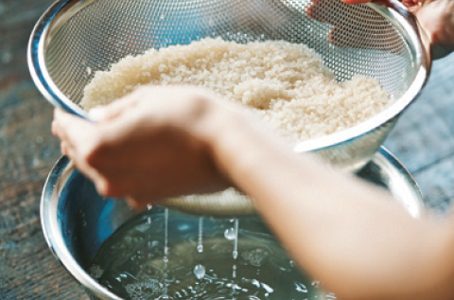
2. Transfer the measured rice to a fine-mesh strainer. Fill a bowl with clean water and submerge the strainer into the water, lifting it quickly to drain.
We recommend filling an empty bowl with water first, rather than adding the water directly into the rice-filled strainer—the water pressure may damage the grains.
Dry rice grains will immediately start absorbing moisture upon water contact. To prevent the rice from absorbing excess rice starch and unwanted flavors, minimize the contact time with the rinsing water by removing the strainer quickly.
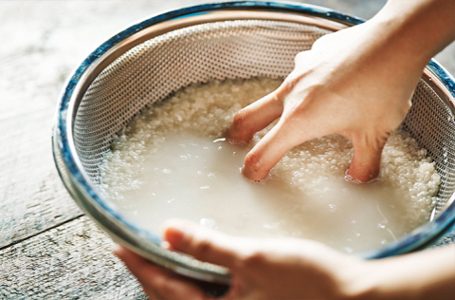
3. Refill the bowl with clean water and place the strainer inside, this time using three fingers—thumb, pointer, and middle—to gently wash the grains in a circular motion. Discard the water and repeat.
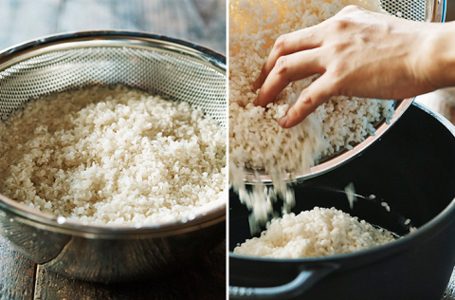
4. Drain the water well and gently transfer the rice to the pot.
Washing brown rice:
Brown rice is less absorbent than its counterpart; thus the act of scratching each grain’s surface aids in water absorption, which is important in achieving ideal chewiness and the perfect texture.
Additionally, brown rice must be soaked separately after rinsing and prior to cooking in the pot. We recommend approximately 6 hours of soaking for best results. Be sure to drain the water afterwards, then transfer to the pot with fresh water for cooking.
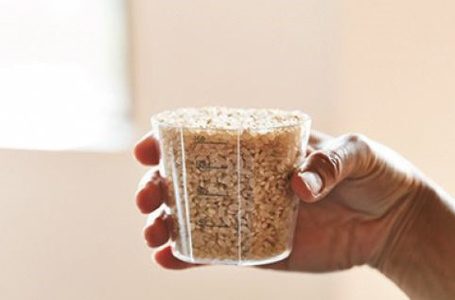
1. Accurately measure the desired amount of rice with the provided rice measuring cup. Be sure to precisely level each full scoop of rice by scraping the top with a chopstick or knife.
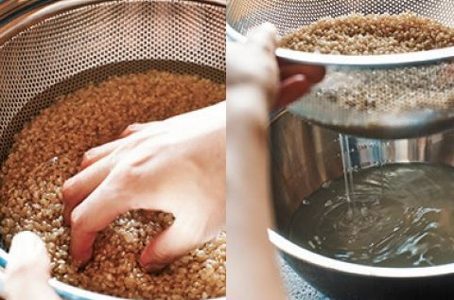
2. Transfer the measured rice to a fine-mesh strainer. Fill a bowl with clean water and submerge the strainer into the water, lifting it quickly to drain.
We recommend filling an empty bowl with water first, rather than adding the water directly into the rice-filled strainer—the water pressure may damage the grains.
Dry rice grains will immediately start absorbing moisture upon water contact. To prevent the rice from absorbing excess rice starch and unwanted flavors, minimize this contact time with the rinsing water by removing the strainer quickly.
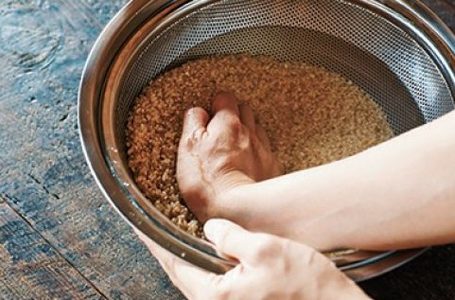
3. Refill the bowl with clean water and place the strainer inside. Use the heel of your hand to rub the grains against the mesh to scratch the rice husk. Discard the water and repeat.
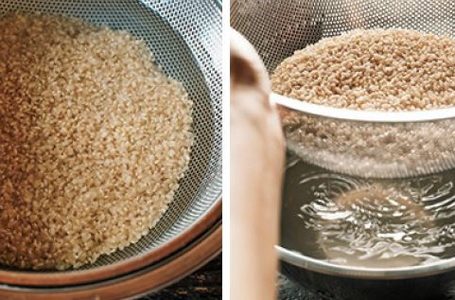
4. After refilling the bowl again with clean water, leave the rice to soak—approximately 6 hours for best results or a minimum of 2 hours. Discard the soaking water and transfer the rice to the pot with fresh water for cooking.
Do not use the soaking water to cook the rice, as this may result in a starchy taste.
Notes
- Be sure to measure both rice and water quantities accurately using the measuring cups provided. We recommend a rice-to-water ratio of 1 : 1.05, which equates to 189 ml of water to 180 ml of rice (1 rice cup). The included water measuring cup is already scaled to 189 ml for every rice cup.
- Please note that the standard US cup is 240 ml, but our rice cup is 180 ml or about ¾ US cup (approximately 150 g / 5.3 oz for white rice; 155 g / 5.5 oz for brown rice).
- You can adjust the amount of water to achieve your preferred rice texture. Increasing the water by 5–10%, or up to 1.1 cups using the provided water measuring cup, will yield softer grains.
